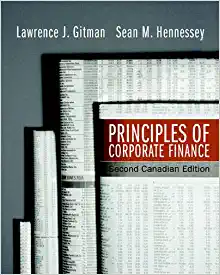I need the OCS for Yahoo. I will attach a spreadsheet that needs to filled out for the question but I already started it but need help to fill in the table with the Estimating Optimal Capital Structure (Millions of Dollars).
Tool Kit for Capital Structure Decisions Optimum Capital Structure Problem (Millions of Dollars Except Per Share Data) NUMBERS IN RED MUST BE INPUTTED, NUMBERS IN BLUE ARE CALCULATED Input Data (Millions Except Per Share Data) Tax rate Debt (D) Number of shares (n) Stock price per share (P) 6/16/2015 Data From: WACC Report 31% $1,140,504.00 975,588 $42.83 Capital Structure (Millions Except Per Share Data) Market value of equity (S = P n) Total value (V = D + S) Percent financed with debt (wd = D/V) Percent financed with stock (ws = S/V) $41,784,434.04 $42,924,938.04 2.7% 97.3% Cost of Capital Cost of debt (rd) Beta (b) Risk-free rate (rRF) Market risk premium (RPM) Cost of equity (rs = rRF + b RPM ) 0.00% 1.46 2.41% 5.50% 10.44% Cost of Equity from Dividend Growth Model Future Dividend Growth Rate Last Dividend $ Share Price $ (4/5/13) 0.00% 0.0000 $42.83 Cost of Equity from Dividend Growth Model 0.00% Data From: WACC Report Cost of Equity from Bond Plus Markup Cost of debt Risk Markup Cost of Equity from Bond Plus Markup 0.00% 7.20% Average rs 7.20% 5.9% WACC 5.72% ESTIMATING THE OPTIMAL CAPITAL STRUCTURE The optimal capital structure is the one that maximizes the value of the company. Also, that same capital structure minimizes the WACC. We begin by estimating how capital structure affects the costs of debt and equity. The effects on debt are usually estimated by talking with bankers and investment bankers. Discussions with its bankers indicate that Strasburg can borrow different amounts, but the more it borrows, the higher the cost of its debt. Note: the percentages are based on market values. Estimating Optimal Capital Structure (Millions of Dollars) 10% 1. 2. 3. 4. 5. 6. 90.00% 2.80% 1.54 10.89% 1.92% 10.00% ws rd b rs rd (1T) WACC Notes: 15% 85.00% 3.00% 1.61 11.25% 2.06% 9.87% Percent of Firm Financed with Debt (w d) 20% 25% 80.00% 3.26% 1.68 11.65% 2.24% 9.76% 75.00% 3.50% 1.76 12.10% 2.40% 9.67% 30% 35% 40% 70.00% 4.00% 1.86 12.61% 2.75% 9.65% 65.00% 5.00% 1.96 13.21% 3.44% 9.79% 60.00% 5.75% 2.09 13.90% 3.95% 9.92% 1. The percent financed with equity is: w s = 1 wd 2. The interest rate on debt, r d, is obtained from investment bankers. 3. The levered beta is estimated using Hamada's formula, and unlevered beta of b U = x and a tax rate of 39%: b = bU [1 + (1-T) (wd/ws)]. 4. The cost of equity is estimated using the CAPM formula with a risk-free rate of 2.87% and a market risk premium of 6.54%: r s = rRF + (RPM)b. 5. The after-tax cost of debt is r d (1T), where T = 39%. 6. The weighted average cost of capital is calculated as: WACC = ws rs + wd rd (1-T). THE HAMADA EQUATION Hamada developed his equation by merging the CAPM with the Modigliani-Miller model. We use the model to determine beta at different amount of financial leverage, and then use the betas associated with different debt ratios to find the cost of equity associated with those debt ratios. Here is the Hamada equation: b = bU x [1 + (1-T) x (D/S)] b = bU x [1 + (1-T) x (wd/ws)] bU = b / [1 + (1-T) x (wd/ws)] Here b is the leveraged beta, bU is the beta that the firm would have if it used no debt, T is the marginal tax rate, D is the market value of the debt, and S is the market value of the equity. Levered beta, b Current wd Current ws Tax rate bU 1.46 3% 97% 31% 1.4331 As shown above, beta rises with financial leverage. With beta specified, we can determine the effects of leverage on the cost of equity. Shamia Waller 06/22/15 OCS BUS 5540 What was the existing capital structure for your firm? Do you believe it was optimum? Should your company take on more debt, repurchase stock, have a seasoned equity offering? Justify your







